Snakes of the Yucatan
Most of us who spend much time in the Yucatan owe a lot to one or two native Yucatecos who counseled us on everything from government bureaucracy to where to find the best deal on doorknobs. And if you're here long enough, someday this happens:
This invaluable friend appears at your door bearing a brightly colored, boldly patterned, horribly mangled little body of a snake, declaring that quick action and a sharp machete have just saved you from a deadly venomous encounter.
In fact if you live here long enough listening to your neighbors' stories about deadly snakes, you'll start getting the impression that every nook and cranny, indeed the whole countryside, is infested with horribly poisonous snakes.
Now let me tell you this: for years I've been tramping around in the Yucatan's woods, along forest trails, through plantations, in old buildings, hacienda gardens, roadsides, etc., and so far I've not for certain seen a single poisonous snake.
I know that they're here, for scientific literature tells me so, and I have a friend near Telchac Pueblo who one day in his orange orchard was bitten by a venomous Cantil and almost lost his leg. Still, my experience has been that poisonous snakes in the Yucatan are much rarer than, say, in Mississippi's piney hills, on Oregon's mountainous slopes, or Kentucky's rural countryside.
Which Venomous Snakes Are Here?
According to distribution descriptions in Jonathan A. Campbell's "Amphibians and Reptiles of Northern Guatemala, the Yucatán, and Belize," here are the dangerously venomous snakes to be found in the Yucatan Peninsula:
- Variable Coral Snake, Micrurus diastema; throughout (pictured in banner)
- Neotropical Rattlesnake, Crotalus durissus; throughout but spotty (first picture at right)
- Cantil, Agkistrdon bilineatus; northern Yucatan (second picture at right)
- Barba Amarilla, Bothrops asper; throughout except the northwest (third picture at right)
- Jumping Pitviper, Atropoides nummifer; southern Yucatan
This means that if your Yucatan base is near Mérida or along the northwestern coast, you only have three venomous species to worry about. You are too far west for the Barba Amarilla (also known as the Fer-du-lance), and too far north for the Jumping Pitviper. For you there's the coral snake, the rattlesnake and the Cantil. The Cantil is closely related to the Northern Water Moccasin or Cottonmouth.
Habits of Snakes
Both coral snakes and Cantils hunt mainly at night, and rattlesnakes are of a very spotty occurrence. Therefore, if you take normal precautions, such as watching where you put your hands and feet when you're in snake country, snakes are just not a big worry in places most of us go to. That is not to say that you needn't be careful in gardens, where there's thick underbrush, in trashy areas or where piles of leaves or other plant material are lying on the ground.
Getting to Know Your Snakes
If you are interested, you might want to consier doing a Google Image search on the venomous species from the list above that are found in your area, study their pictures, and become acquainted with each species' distinctive features.
The five species in the above list fall into two main groups: the coral snakes and the pit vipers. The bottom four species on the list are all pit vipers.
Variable Coral Snakes are known by these features:
- red, yellow and black rings encircle their bodies in the sequence of black-yellow-red-yellow-black
- a black forehead
- the head is about the same width as the neck
How To Recognize the Region's Venomous Snake
Every pit viper has a conspicuous pit, or hole, in its face between each eye and the nostril in front of it. The pits contain heat-sensing organs enabling the snake to locate warm-blooded prey in total darkness. (And you thought they were called pit vipers because they lived in pits, didn't you?)
The vipers and rattlesnake are responsible for most snakebites. At one time, bite fatality was about nine percent, but, due to the development of antivenom, that number has dropped to almost zero. It is important to seek medical treatment right away as the necrotic venom causes tissue necrosis which you can google later for nightmare fuel.
In the Yucatan, any native snake that is not banded like the mostly red-and-black coral snake (banner image), and does not have a pit between its eye and the nostril, is not dangerously venomous.
Mildly Venomous Snakes
Several other snake species are mildly venomous. If they bite you, you may suffer some inflammation and soreness for a few days but that'll pass and leave no lasting effects. Brown Vine Snakes, which more than one campesino has grabbed thinking they were dangling brown vines, are that kind of snake.
Friendly and Harmless Lookalike Snakes
An aggravating feature of dealing with venomous snakes in the Yucatan is that several perfectly harmless, gentle species do a good job mimicking a venomous species. That's especially the case with coral snakes. The Ringed and Short-faced Snail-eater (fifth picture), Long-tailed False Coral, Red Coffee Snake (fourth picture at right), and the Tropical Milksnake all look somewhat or very much like venomous coral snakes. Some of them are quite common, and are likely to be seen during the day. The vast majority of snakes I've seen mangled because they were identified as coral snakes have been harmless, wonderful little Tropical Milksnakes, who like to curl up in flowerpots on patios, and little Red Coffee Snakes, who have a passion for trashy areas, and who, if you nudge them, are likely to fall over in a faint, not bite.
Snakes, In General, Are Nice
Snakes play an important part in maintaining the balance of species in the ecosystem, especially with regard to controlling rodent populations. Even more important, snakes are beautiful and worthy creatures in their own right. Not every snake you find should be killed, therefore, and it would do the Yucatan environment a world of good if we all learned how to tell the venomous apart from the harmless.
Editor's Note: We have to concur with Jim Conrad, the Backyard Nature guy... we have lived here for many years and the only snakes we have seen have been dead on the highway.
If you enjoyed this article, we encourage you to read more about the nature around you in Jim's wonderful website, www.backyardnature.net. and look for more articles about the Yucatan natural world here soon!




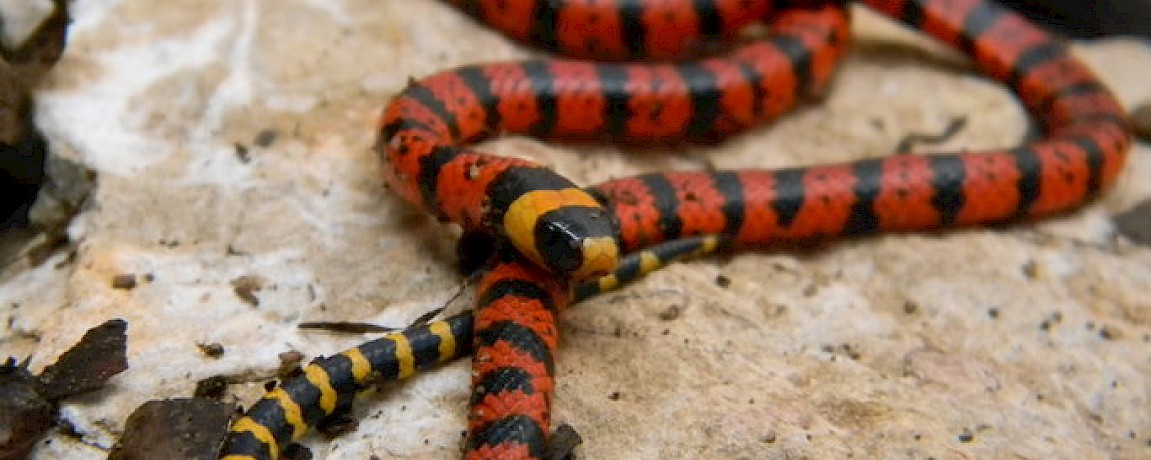

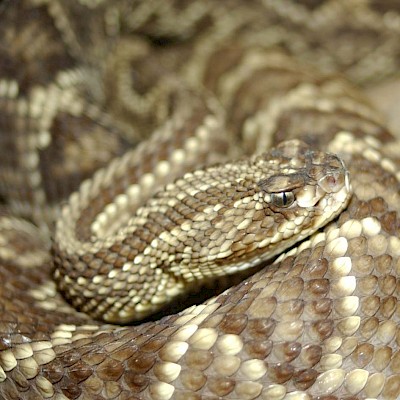
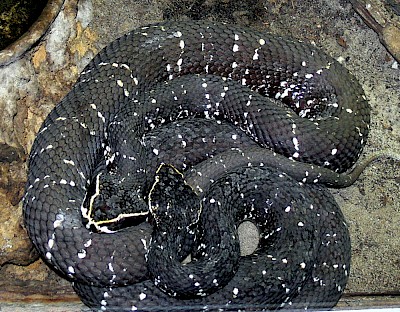
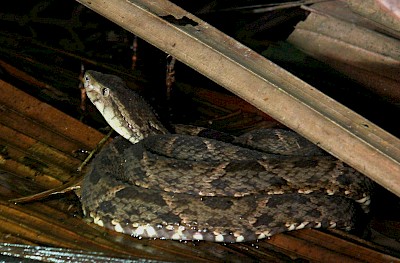
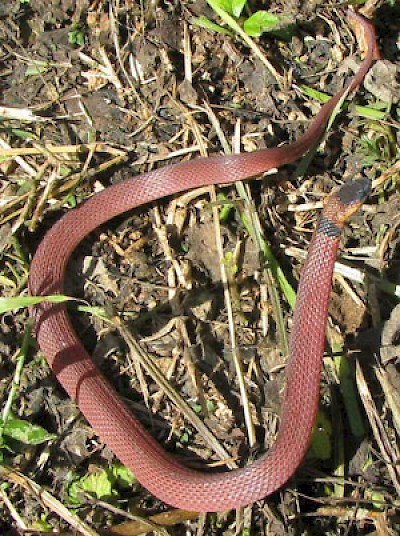
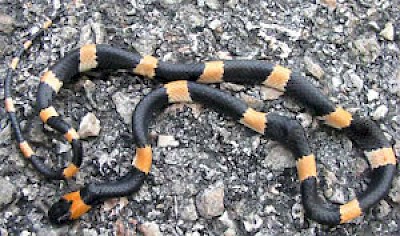
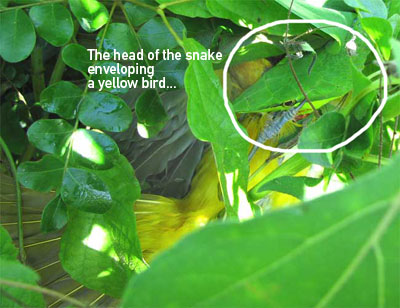
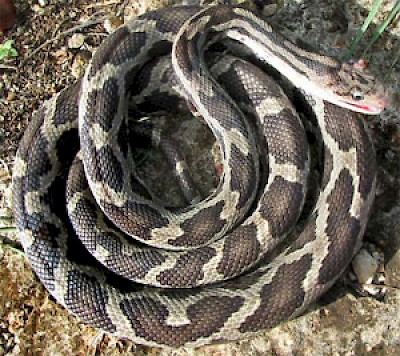
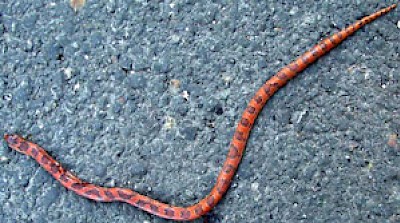
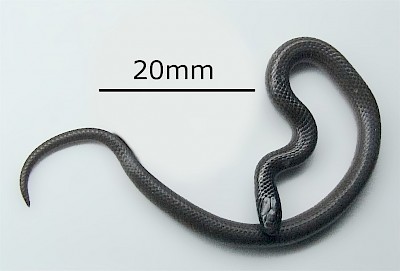

Comments
Anna 7 years ago
Hi,
I got nipped by something small whilst wandering barefoot over a large pile of dried seaweed near the coast, near Puerto Morelos.
Two small puncture wounds slightly less than a centimetre apart, about 1mm each. Barely any swelling and a rash that appeared over my whole ankle two hours later, then disappeared a few hours after that. Any ideas as to what I may have upset to end up with such a nip? Sadly I didn't see it, as I leapt quickly off and charged into the sea with a bloody ankle! Clearly not venomous, as I'm still around 4 days later, just curious (and now know better than to wander barefoot on seaweed piles!).
Thanks,
Anna
Reply
Lia 7 years ago
Information really good need the name of the snakes with the picture or maybe the picture in the paragraph if the snake. Just to make it clearer and easier to see.
Thanks
Reply
Sam 9 years ago
I'm a conservation biologist but I'm new to the Yucatan. So far I've seen three snakes here: a terciopelo (fer-de-lance) and what appeared to be a black rat snake (both in the wildlife refuge near Celestun), and a red coffee snake in my new backyard in Chuburna. Can anyone recommend a good reference book on snakes of the Yucatan? Spanish is fine, but without pictures is worthless.
Reply
Bev Scott 8 years ago
https://www.amazon.ca/Field-Guide-Amphibians-Reptiles-World/dp/0801485878/ref=sr_1_3?ie=UTF8&qid=1522957919&sr=8-3&keywords=reptiles+and+amphibians+mexico
Although somewhat dated, ie. range maps, I have found this book a useful reference guide.
Reply
Zack Armstrong 9 years ago
I'm on Cozumel for 6 months at a time. Two times I have seen a snake on the golf course. Dark brown and about 3FT long. Have no idea what kind they are. One time it was a bit closer then I would like. About under foot when I saw it going in to the rocks.
So yes there are snakes on Cozumel !!
If any one thinks they knows what kind of snakes there are here other then Boa's I would love to know. Thanks Zack
Reply
Shauna 9 years ago
Scott....always snakes, but I am more interested In your
research and PP presentation..... Do you have a website or are you able to share any of your papers, etc
Thank you,
Shauna Booth
Cancun, MX
Reply
Dr. Scott A. Ogburn, Ph.D. 9 years ago
Greetings, I have a Ph.D. in Sacred Architecture of Ancient Civilizations and I have made 5 trips to the Yucatan,10 days each time, in the last 6 years. I have visited various Mayan Pyramids and Mayan Temples, for Sacred Architecture of Sacred Mayan sites, gathering photos for Power Point Lectures at U.S. Universities.
Thankfully, I have Not seen any snakes in 5 trips to the Yucatan. However, and this is my Important Question, of which I hope you send me an e-mail. In the last 2 years, I have visited in person what are called Mayan shaman vision quest caves in the Northern Yucatan and some of these caves have pools of water around 6 - 10 feet deep.
I have waded in some of the these caves and pools of water. So my Important question:
ARE there any poisonous water snakes that you know of that regularly inhabit any caves in the Yucatan with pools of water?
Dr. Scott A. Ogburn,
Ph.D. in Sacred Architecture of
Ancient Civilizations
Part time College Professor of Architecture Students in the Philadelphia near Pennsburg, PA.
215 804-8758. cell phone
Reply
Andres 10 years ago
What can someone say about the scorpions in Merida ("alacranes" in Spanish) ?
Reply
Randy peek 10 years ago
About 2 weeks ago I saw in a 4 day period 3 coral snakes in my yard.
One near my front door and 2 on my back porch. It has been raining daily.
I live in a jungle development just outside of Tulum.
Reply
Patrick May 7 years ago
Hi Randy. I'll be visiting near Tulum in about two weeks. Would love to see a coral snake, if you don't mind me checking behind your backyard for a few minutes haha. Cheers, Pat May
Reply
Working Gringos 12 years ago
Thank you, Maria. We agree with you... snakes are not bad! If you need help identifying one, we suggest you check out this website and contact Jim, the author: http://www.backyardnature.net/yucatan/
Reply
(0 to 11 comments)Next »